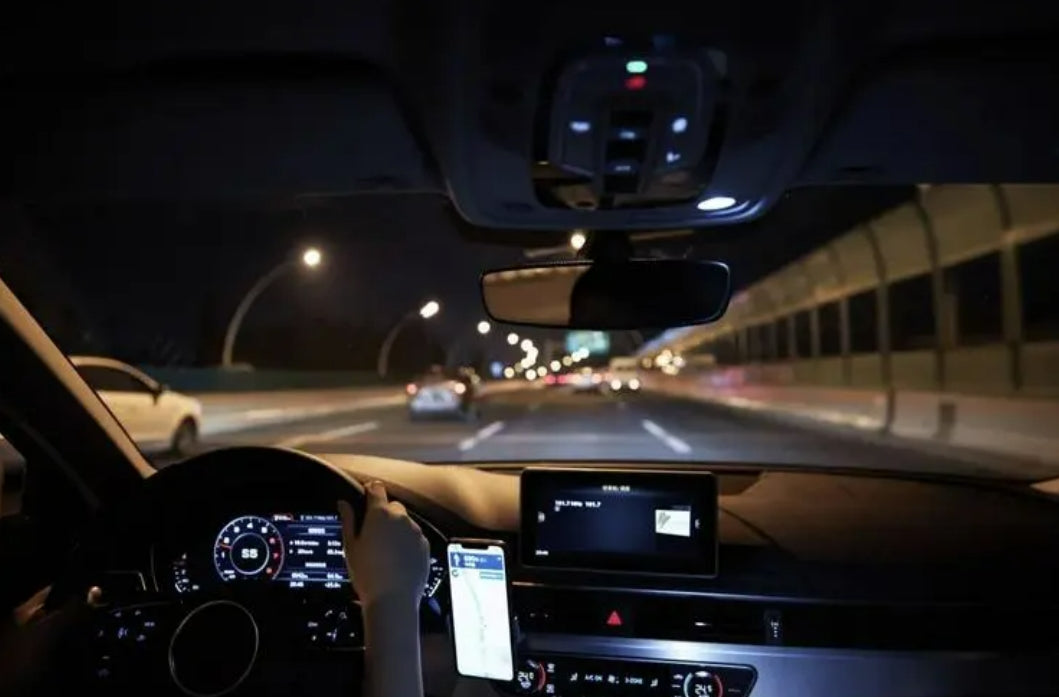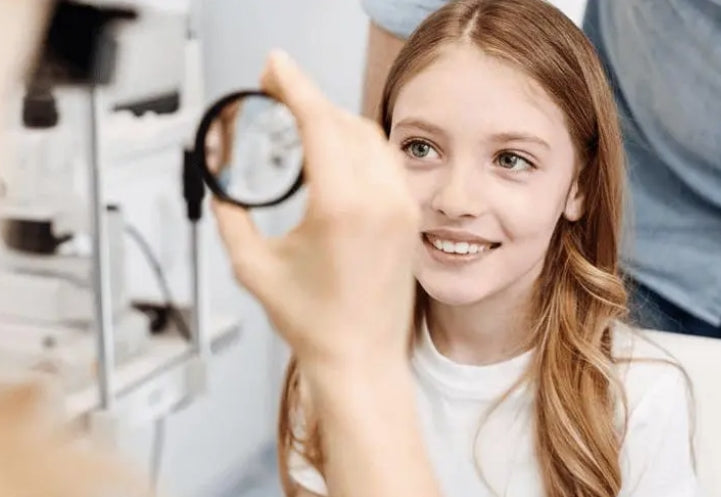In the final analysis, it is the fault of "night myopia", which can be understood as a kind of pseudo myopia produced in a dark environment.
Night-time myopia was discovered very early. In 1789, the astronomer Maskelvne discovered that when staring at the sky at night, wearing myopia lenses can see more clearly. During World War II, the ability to recognize aircraft and ships at night was of paramount importance, so nocturnal myopia and its correction received attention. After the war, with the development of highway traffic, myopia and its correction during night driving became a concern of people and received in-depth attention.
Research.
At present, the main causes are as follows:
1. Tension regulation. To put it simply, the eyes can focus at will during the day, but at night, because they cannot easily identify objects, the adjustment is disordered, and the focus point is not accurate, resulting in the inability to effectively focus on the desired object. As shown in the picture:
2. Spherical aberration caused by pupil enlargement. This is the most common reason. When we take pictures, we often use a large aperture when shooting portraits, which is equivalent to dilating the pupils and blurring the background; when shooting landscapes, we narrow the aperture to emphasize the overall clarity. Then this aperture has the same relationship with the dilation and shrinkage of our pupils. In a dark environment, in order to be clearer, the pupils of our eyes need to be enlarged than during the day, so sometimes we always feel that the headlights are too bright and always dazzle our eyes. The pupils are dilated, and the focusing point must be closer, so the traffic lights in the distance are regarded as blurred background, which is similar to the false myopia of tens of degrees. Take two photos to compare
3. The lens moves forward: When the pupil dilates, the lens can move forward slightly, and myopia may also occur, but the degree is very mild, only -0.20D. Myopia at night is manifested by reduced distance vision at night when the lighting is dim.
4. There will be glare after myopia surgery, and there will be a certain amount of blur when looking at the lights at night.
Off-center gaze: When viewing objects in the dark, the gaze point is not in the central fovea but slightly shifted. Ronhi (1947) determined that it was located away from the fovea. Due to the slightly anterior position of the peripheral retina, it may cause myopia, but the degree is mild
Chromatic aberration is hard to explain and not popularized. There are other undiscovered causes
At present, most of the situations we usually encounter are caused by myopia and astigmatism, or hyperopia. Some customers also complained that they could not see clearly at night, but their uncorrected vision or their prescription glasses were above 1.2. This kind of situation is the nighttime myopia mentioned earlier. In the face of this kind of situation, we generally deal with it like this:
1) For people without myopia, hyperopia, or astigmatism, turn off all the optometry lights. At this time, the visual acuity will decrease when looking at the eye chart. Then let them wear 50 degrees of myopia. If the improvement is obvious and the satisfaction is achieved, then then First match the 50-degree glasses, and track whether the customer improves.
2) For customers with undercorrected myopia and astigmatism, the myopia is fully corrected, and the overcorrected hyperopia is reduced to undercorrected by 25 degrees. Let it try feedback overnight.
3) For customers who have already corrected their feet, as long as they add a prescription, they will be overcorrected. You can overcorrect a little bit and let them wear anti-fatigue lenses with add+0.50 to +0.88. Because of the overcorrected glasses, you must feel dizzy when looking at the mobile phone. When looking at infinity outdoors, overcorrection will not cause discomfort. feasible.
4) For customers who do not want to change the degree of myopia, if the difference in the degree of myopia is within 50 degrees, we recommend that they wear special driving glasses. The official explanation is the pupil photosensitive technology, but we can understand it as improving the brightness, so that when driving in rainy weather and at night, the long distance will not be shortened due to the dilation of the pupil, and the official number is shortened by depth. While there is no need to dilate the pupils, the amount of light entering does not need to be too large, and the irradiation of distant headlights will be much more comfortable
After nighttime myopia is popularized, when the optometrist cannot give you better advice, you can consider the above 4 points.
One of the revelations based on myopia at night is that when suggesting optometry, there may be overcorrection. If the increase is too high, it is necessary to re-check the degree of myopia in a bright environment.
It is necessary to recheck the degree of myopia in a bright environment.



































